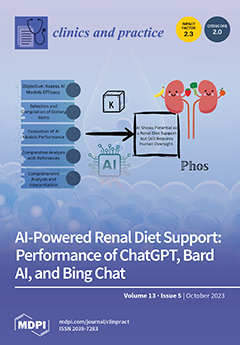Background—Pregnancy represents a nutritional challenge, since macro- and micronutrients intake can affect mother’ health and influence negative outcomes. The aim of this retrospective pilot study is to evidence whether the oral supplementation with high molecular weight hyaluronic acid (HMWHA), in association with alpha
[...] Read more.
Background—Pregnancy represents a nutritional challenge, since macro- and micronutrients intake can affect mother’ health and influence negative outcomes. The aim of this retrospective pilot study is to evidence whether the oral supplementation with high molecular weight hyaluronic acid (HMWHA), in association with alpha lipoic acid (ALA), magnesium, vitamin B6 and vitamin D, in pregnant women, could reduce adverse effects, such as PTB, pelvic pain, contraction and hospitalization. Methods—Data were collected from
n = 200 women treated daily with oral supplements of 200 mg HMWHA, 100 mg ALA, 450 mg magnesium, 2.6 mg vitamin B6 and 50 mcg vitamin D (treatment group) and from
n = 50 women taking with oral supplements of 400 mg magnesium (control group). In both groups, supplementation started from the 7th gestational week until delivery. Results—Oral treatment with HMWHA, in association with ALA, magnesium, vitamin B6 and vitamin D in pregnant women, significantly reduced adverse events, such as PTB (
p < 0.01), pelvic pain and contractions (
p < 0.0001), miscarriages (
p < 0.05) and admission to ER/hospitalization (
p < 0.0001) compared with the control group. Conclusions—Despite HMWHA having been poorly used as a food supplement in pregnant women, our results open a reassuring scenario regarding its oral administration during pregnancy.
Full article






